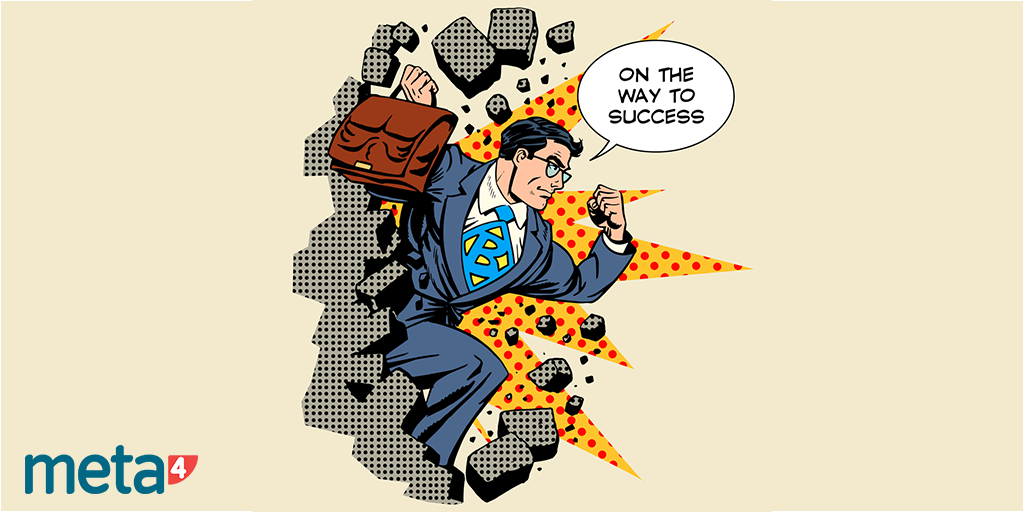We tend to think of development plans as just for the company, to make sure that the workforce is prepared to do what it must do to meet business goals. However this is limiting. Agile companies focus far more on managing individuals who cooperate with one another as one large team to achieve business goals. This impacts development planning.
HR’s job through discipline, method and objectivity is to develop plans for all the people in the company using the right kinds of intuitive HR tools and methodologies. Yet, who is HR going to develop plans for? Should HR’s development planning for the company’s success be from top down or from bottom up for each individual? Actually both are right, but should be done together.
HR must develop both the workforce and individuals
What happens if HR does not develop individuals in a personalize manner? HR will be likely to miss great opportunities by not taping into each individual’s potential sooner.
Let’s take a deeper look at how the development strategy differs depending on the perspective adopted.
Workforce development from a corporate perspective
When you adopt a workforce focus to development, arguably you are taking a top down approach to aligning the workforce with corporate goals. Here’s how this happens. Top management establishes the new goals to pursue and HR’s job is to find out who in the company fits the closest.
HR and line managers are in practice focusing on workforce development needs, rather than individual ones to achieve the corporate goals and dreams.
{{cta(‘febe892d-bc2c-4857-acd1-dcd8007cf4d5’)}}
Workforce development from the individual’s perspective
However, not all development actions will retain or engage members of the workforce. That is particularly true of development actions that are enforced upon individuals without taking into consideration their needs and wants.
HR should be constantly reminded that individuals in workforce all have their own dreams, aspirations, worries and goals—however obvious this might be. HR should be wondering whether these individual goals match corporate ones. Once employees stop having some sense of fun working—enthusiasm will wane. So HR’s job is also to help employees develop their personal interests; otherwise they will run the risk of demotivation and lower performance, or even a decision to leave the company. Of course managers play a role too and share some of this responsibility.
By looking after their employees with personalized development planning using the right approaches and tools, agile companies will be more successful in retaining and attracting talent, in addition to boosting engagement and motivation.
Also, by helping to develop personal interests and dreams, HR and managers will also be able to tap into new skills that aren’t needed yet. This is vital for an innovation culture.
Different Development Actions
Even the types of development actions will be different depending on the perspective adopted.
Development Actions from the Corporate Perspective:
Development actions derived from the workforce perspective mainly revolve around improving skillsets among employees so they can do their job effectively. However there are others based on compensation for more challenging jobs or jobs that rely on commissions and flexible benefits, for example.
Development Actions from the Individual’s Perspective:
From this perspective, there are many interesting development actions for personalized development plans. This includes tailored upskilling based on the individual’s interests and ambitions for the current job, future promotion or other internal mobility vacancies. Work life balance actions are also valuable, as are others that stimulate collaboration and innovation –attending events, participating in cross project activities, or even allowing individuals to take courses that interest them even though they aren’t directly related to work. There are plenty more, and as the business environment keeps evolving, these actions will also change in ways we can’t yet imagine, just like the idea of makerspaces which is relatively new and didn’t exist a few years ago.
What makes a company agile and successful?
The mindset and culture in agile companies is steered towards constant and iterative development in all areas of the business, and by osmosis, that includes HR policies for developing both the workforce and the individual. Measuring the outcomes of development actions feeds back into the development cycle to continually improve talent among the people who make the company great.
Workforce development and personal development are two sides of the same coin. In a successful and agile company one doesn’t happen without the other. By harnessing both HR and managers will also create a far stronger sense of co-responsibility with the individual who will pledge to achieve goals through personalized development plans.






